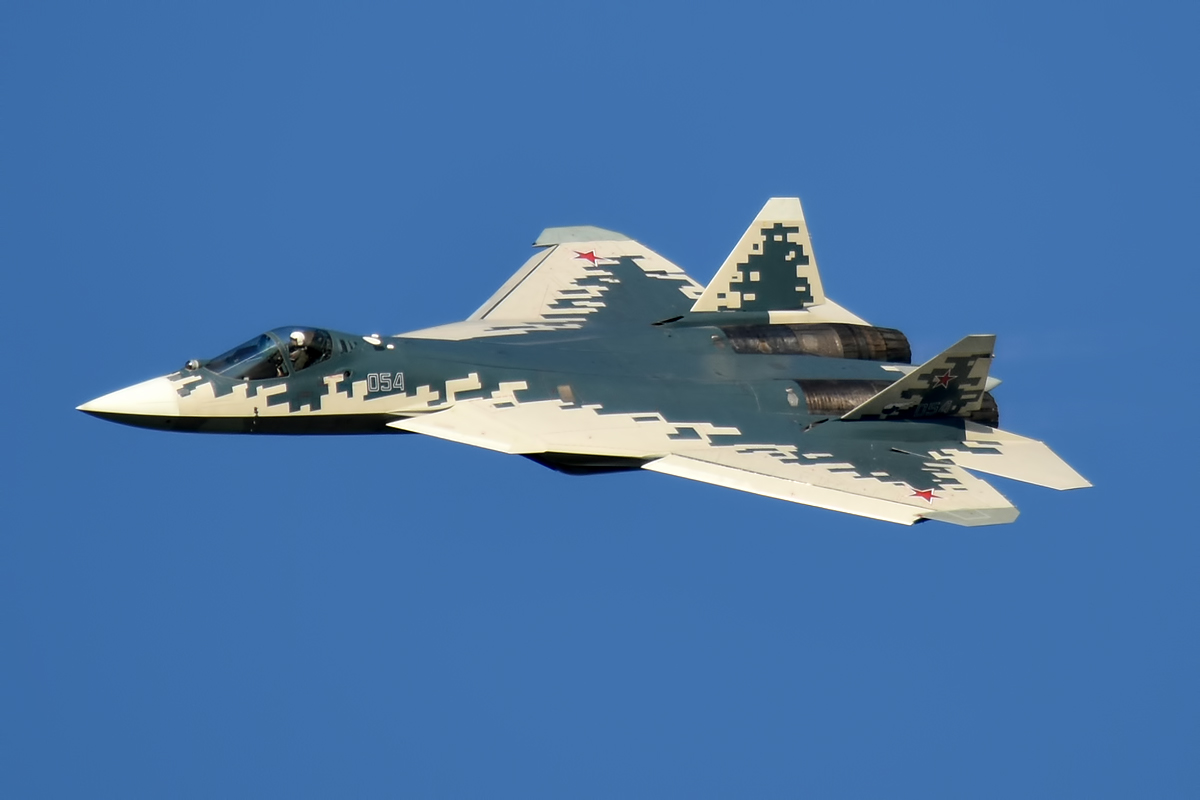
Moscow has been vocal about the prowess of its Sukhoi Su-57, known as “Felon” by NATO. However, its noticeable absence in the Ukrainian airspace raises questions.
If we view the launch of long-range missiles into Ukraine as a significant threat in the recent conflict, this absence could be interpreted differently. But it’s crucial to consider the broader context.
The ‘Stealthy’ Su-57 To an observer, Moscow may seem hesitant to deploy its aircraft in the Ukrainian conflict. Could it be because they fear that Sukhoi’s advanced stealth fighter isn’t as technologically advanced as they’ve claimed?
There are lingering doubts about its stealth capabilities. According to the aviation enthusiasts at TheAviationGeekClub.com, they are not entirely convinced by Felon’s stealth credentials.
This robust online platform, which caters to military aviation enthusiasts, has collected opinions from various aircraft scholars. The general agreement? The Su-57’s lower radar signature doesn’t compare to that of Lockheed Martin’s F-22 Raptor or F-35 Lightning II.
Abhirup Sengupta, a well-regarded figure in the aviation field, explains, “Sukhoi asserts that the Su-57 has an RCS goal between 0.1 to 1 m^2 [-10 to 1 dBsm]. But consider this – the F-117 had an RCS of approximately -25 dBsm, and both the F-22 and F-35 claim an RCS superior to -40 dBsm. This suggests a difference of 1,000 to 10,000 times when compared with the Su-57. It’s important to note that these comparisons are based on the unclassified program goals and YF-117’s RCS testing data from Skunk Works.”
The Su-57 and the American F-18 SH Sengupta continues the discussion about the objective, which was to engineer an existing airframe [Su-27], to reduce the Radar Cross Section [RCS] without the need for a completely new model. “The lack of basic features such as Serpentine intakes, crucial for a serious LO signature, reveals the Sukhoi Design Bureau’s intentions. Essentially, the Su-57 bears a significant resemblance to the US Navy’s F-18 Super Hornet program,” Sengupta elaborates.
In a broadcast on Zvezda TV Channel towards the end of 2018, Mikhail Strelets, the chief designer and director of the renowned Sukhoi Design Bureau, confidently asserted the Su-57’s dominance over its rivals, the F-35 and the Lockheed Martin F-22 Raptor.
Strelets boldly proclaimed the Su-57 as unparalleled in the domain of fifth-generation aircraft. He even cleverly used a numerical comparison, remarking, “It wasn’t planned, but it’s fascinating to observe that when you add 22 and 35, you astonishingly get 57.”
Despite sporadic praises from NATO F-35 pilots about the Lightning II’s capabilities, Russian pilots have been largely dismissive of it.
On his 70th birthday, celebrated test pilot, Magomed Tolboyev, confidently told Tass in an interview, “In a head-to-head confrontation, a Su-57 would easily outperform an F-35. While the F-35 possesses significant electronic capabilities, it falls short in terms of maneuverability. However, in this age of advanced warfare, it’s not just about a single aircraft entering the battlefield. It’s about a comprehensive tactical strategy and the support provided. We’re no longer dealing with a simple sparring mat.”
Interestingly, in recent years, while Russia has heavily promoted the Su-57’s maneuverability and weapon capacity, it has significantly downplayed its stealth aspect. Perhaps Russia is playing its cards close to its vest, cognizant that the Felon might be quite detectable on radar.





